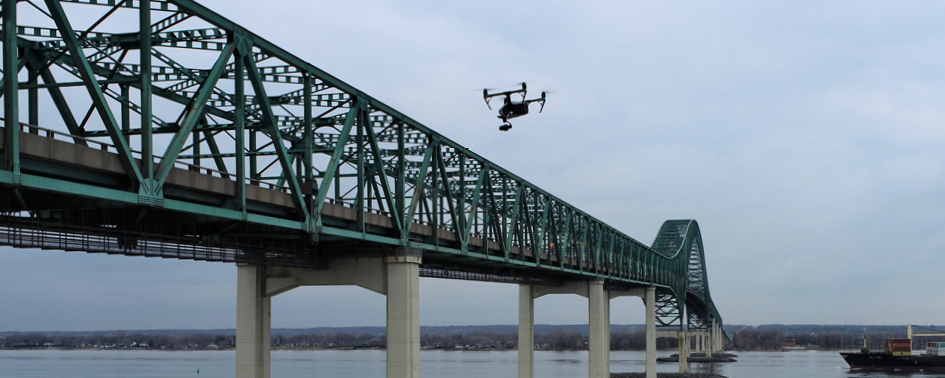By: Greg Bradley, BIM & Reality Capture Director
The AEC industry is continually realizing the importance of reality capture technology involving the use of unmanned aerial vehicles (UAVs) or drones. UAVs not only aid in the collection of various types of data including photos, video, LiDAR and geothermal, they also provide faster and more accurate results and deliverables for our clients.
EXP has embraced UAVs to enhance the quality of project deliverables and reduce collection time and staff requirements while allowing for safer and non-intrusive working conditions. These high-quality datasets gathered with UAVs, in conjunction with advanced cloud computing, AI and machine learning, provide the ability to deliver services faster, analyze in greater detail and create a wider range of deliverables, providing design teams and clients with efficient access to detailed project information.
UAVs improve industry processes in many areas. Thermal imaging and inferred cameras enhance and improve building envelope inspections and ground penetrating radar aids civil design teams by identifying potential underground conflicts. Cloud platforms using AI and machine learning improve processing time and expand delivery options, while creating quick and easy access for clients, contractors and interested parties. This technology also provides the opportunity to save time and resources, as volume calculations, distance measurements, site visits and timelines can be conducted remotely without the need for powerful computers or software.
In addition to collecting accurate and detailed data for planning and assessments, UAV photo and video capabilities make them ideal for creating informational material to showcase a site’s features or amenities for marketing and site management purposes. UAVs can capture aerial shots that are otherwise difficult or expensive to obtain, such as panoramic views, bird’s eye views or flythroughs.
While this technology is beneficial, it comes with several challenges and barriers such as government regulations, the time and cost associated with pilot training and equipment and software costs. Additionally, this technology is rapidly evolving, and both the devices and the software that support them also change at a fast pace. To mitigate these challenges, EXP has invested in staff, equipment and software that enable us to smoothly and effectively adopt new drones and payloads and support the deployment of drone programs throughout the company.
At EXP, we have focused on building our expertise internally to provide safe and efficient project delivery. Our in-house experts allow us to broaden our service offerings and deliver successful solutions. EXP’s dedication to digital delivery and complete “scan to design” services have positioned us as a competitive firm across a wide range of engineering projects. EXP’s “cradle to the grave” design approach compliments our proactive position in the AEC reality capture space and benefits all project aspects.
We employ UAVs for a variety of tasks including inspections of bridges, buildings and site work, generation of topographical mapping, orthomosaic image creation and environmental impact assessments. EXP continues to actively pursue additional sensors and payloads including thermal mapping, ground penetrating radar and air quality monitoring in an effort to expand our service offerings. The ability to offer a variety of UAV solutions is part of EXP’s continued effort to offer complete services within the AEC industry and improve our expanding digital delivery process.
Over the past year, we have used our UAVs for a number of building safety inspections in coastal Florida, where the clients required a quicker turnaround and a detailed look at hard-to-reach places including exterior walls, balconies, eaves and roofs. These engagements consisted of UAV flights to examine the building envelope. A high-resolution zoom camera was used for many locations that may have otherwise been inaccessible, and EXP was able to gather the required information safely from the ground. Data was then uploaded for the engineers and clients who were not on site, giving them the ability to analyze and review the images remotely, ensuring adequate coverage.
On another project, EXP conducted the collection of drone photogrammetry in Shawingan, Canada. Photos and ground control points were collected to produce a geo-referenced 3D surface model to assist in and validate the design of a commercial building. EXP collected and processed the data and created the topographical information and a 3D surface model which was used for design and presentation purposes.
EXP is committed to using this impactful and rapidly advancing technology to its fullest potential. Our teams continue to investigate new equipment, sensors, software and platforms in an effort to utilize UAVs to their fullest potential. EXP is dedicated to developing our knowledge of this technology and to expanding internal service offerings to allow us to continue providing innovative cutting-edge solutions for our clients.

